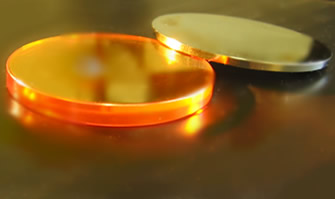Introduction
This calculator shows what a Gaussian beam is converted to after passing through a custom-made optic. You can set parameters to change the shape of the custom optic and see what the beam looks like some distance away. Since top-hat beam shapers are commonly used, this calculator is also set up to optimize the beam shaper to get a top-hat shaped beam some distance away.
Shaper Design
The incident beam is assumed to be Gaussian (with the specified full width half max) where the shaper is. It is also assumed to be collimated (ie. at a beam waist), but this doesn't really matter as described below. The shaper consists of a custom optic followed by a standard lens of a chosen focal length (for practical purposes, it is easiest to manufacture this way). This is because a particular shape is commonly required near a focal spot after a lens.
The shape of the beam is calculated at the evaluation distance ('Eval distance'). The beam does not necessarily need to be used this way though. Since the beam would become the calculated shape at the specified position, it could instead be re-imaged to whatever position and magnification is convenient, while retaining the same shape. Similarly, if the beam is not collimated at the shaper, this will not change the calculated shape, it will just create it at a slightly different position. If a weakly diverging beam passes through the shaper, it is exactly as though a collimated beam passed though the shaper, followed by a weakly diverging lens.
Calculator Details
Under the 'Parameters' section, various parameters of the optical system (wavelength, incident beam width, etc.) are set. Click a title for a description.
Under 'Shaper Components', the parameters for the shaper are set. The custom optic is specified using Legendre polynomials. This doesn't matter very much; you can just put values under the 'Amplitude' heading, and see how the shape of the shaper changes. This is the 'Shaper shape' graph. You can also how the shape of the beam changes at the evaluation plane. This is 'Final beam shape' graph. It is typically enough to have 3 shaper components.
Optimization
By hitting the 'Optimize' button, the shaper components will be optimized to make a top-hat beam of the specified radius. The optimization starts from from currently entered shape. To reach the best shape, it may be worth optimizing again starting from the previously calculated values to see if it finds anything better.






